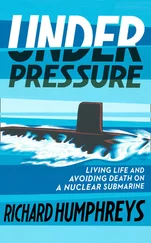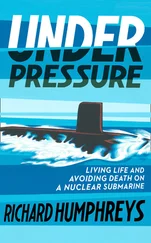We are not defined by pressure moments unless we let them define us. Move through and past the psychological threat to see the wonderful opportunity presented to us to go as far as we can. Instead of becoming mentally subdued, numb and frozen, we will come alive. It will be life-changing.
Reflect on your mindset when you hit discomfort. What’s your habitual response? Are you stimulated by the challenge of these moments, or does the threat loom larger? Do you walk towards them or walk away?
The discomfort of pressure: threat or challenge?
Overthinking vs Connecting
Overthinking
When I ask athletes to describe their worst 10 minutes in sport, one word always causes moans of recognition: overthinking.
It’s a strange word. Can we think too much, really? And are there particular thoughts that we can think too much about?
The athlete usually goes on to explain that they were trying their level best to right a wrong, or raise their game, but their best intentions backfired. The harder they tried, the worse things got. It even felt like there was pressure building up inside their head. They had too many thoughts, too fast, and it held them back.
Under pressure, elite sportspeople do not want to think too much or too fast, because it causes problems for their performance. A busy mind gets in the way of clarity. And that is universally seen as a bad thing.
Imagine yourself in a high-pressure moment. Your confidence is taking a battering. The casual remedy is just to think positively, which assumes that we can just replace our negative thoughts with positive ones. But that is simply throwing fuel onto the RED fire.
Your BLUE mind is telling you: ‘I can!’ It’s not a particularly strong voice, perhaps even a bit squeaky. Because while it’s speaking there’s a far stronger, deeper, RED voice booming out the opposite message: ‘I can’t!’
It’s like having two independent minds going in opposite directions and arguing about which one is best. BLUE versus RED. And the RED message feels authentic, while the BLUE voice sounds hollow and unconvincing. (Remember, only our BLUE mind can use words; your RED mind speaks in the language of feelings and sensations. There are no words, but it certainly sends its message.)
In these situations, RED usually beats BLUE. The RED system will not lie down and be ignored – after all, it’s in charge of our survival. The survival parts of our brain appeared on the scene first and got prime position in our nervous system – right on the centre line, or close to it. The RED system cannot be switched off, and the harder the BLUE mind tries to suppress it, the louder the RED voice becomes. Every time we think something positive, a stronger negative thought or feeling comes bouncing back.
Mental chatter overloads our BLUE head, taking the top-down brakes off so that our RED head drives our behaviour more or less unchecked. RED is only interested in the here and now, so with the loss of our BLUE ability to read the play, our sense of direction and our awareness of possible consequences, we become prone to acting too fast, or too slow. That’s why we see even experienced performers become impulsive or hesitant in big moments.
RED vs BLUE STATE
When we are ‘in the RED’ we can lose emotional control, overthink and get diverted. When we are ‘in the BLUE’, we can hold our nerve, maintain our focus and stay on task.
When I ask athletes to describe their best 10 minutes in sport, the one response that stands out is that they felt connected.
Instead of the overthinking that is the hallmark of their worst moments, their sense of connection with their immediate environment meant that they weren’t thinking much at all. Everything seemed so obvious and easy. They perceived, and they acted. They sensed, and they moved. They saw, and they did. The usual middle piece of thinking seemed to disappear. They were ‘in the zone’.
This intensely positive experience of connection is an example of complete absorption with our immediate environment. It’s when our connection with the external environment is so complete that we can effortlessly pick out small details that are overlooked by others, and act upon them decisively. It feels simple to get the timing right; in fact, time seems to slow down, allowing us to easily anticipate events and respond to them.
This is only possible when there’s no sense of disconnection. The most common disconnect occurs when we start to think not about how we are performing the task but how we are looking while we do it. We can only be completely on task when we lose our self-consciousness. The key is to commit all our attention to the external world, rather than splitting it between the external environment and a struggle within our internal world.
Instead of being distracted by doubt, we need to trustour ability to handle what is in front of us. This self-trust forms the RED backbone to support our BLUE focused attention. Banishing doubt and worry avoids overthinking – that busy mind that arises from an internal debate about what we’re doing.
But what about our discomfort, which we’ve seen is a key feature of pressure? We have to move through it. We can’t magically avoid or escape it, but we can choose not to focus on it. It just isn’t the main issue. We can make the discomfort an internal focus, leading to overthinking, with suffering in the foreground. Or we can simply notice the discomfort and let it subside into the background, while our focus returns to the immediate task. With this external focus on doing , our mind becomes still.
When our external environment is more captivating than our internal concerns, RED and BLUE can be in sync, which makes us feel single-minded as we go about our business.
In some cases this sense of connection is so complete – and the self-consciousness so absent – that the barriers between the individual and the environment seem to disappear, and performers say they feel completely at one with their setting.
Some activities are so dangerous – doing BASE jumps, surfing huge waves or free-climbing vicious rock faces – that they demand full attention to the external world. Any major internal diversion risks serious accident or tragedy. During these activities, extreme athletes need to be completely in the zone.
The zone isn’t something that we can simply think our way into, but we can certainly think our way out of it. If we’re completely absorbed by our environment and responding intuitively, then thinking is the last thing we should be doing.
Most athletes can recall one or two times when they were in that perfect zone. But most of us don’t perform in a situation where we need to focus so completely on the external world, or in dangerous physical environments where our physiological state is heightened, or else! Is the zone – that perfect sense of connection – even a reasonable target? If the zone makes things seem effortless, then making an effort to get there feels like the wrong thing to do.
Perfection – aiming for the zone – can be a trap. Instead, let’s return to the simple idea of trying to connect with our external world and removing our focus from our internal world. Let’s put more emphasis on the process of how to get where we want to go, and less on how we feel about where we are at the moment. Let’s regard being in the zone as something we may, or may not, achieve.
Being in the zone – physically and mentally – is an outcome. The processwe use to get there is to control our attention. We set our external target, lock on to it and maintain our focus of attention, with full acceptance of our internal world. If we become diverted by internal discomfort, we just notice it then return to the task at hand.
Читать дальше












